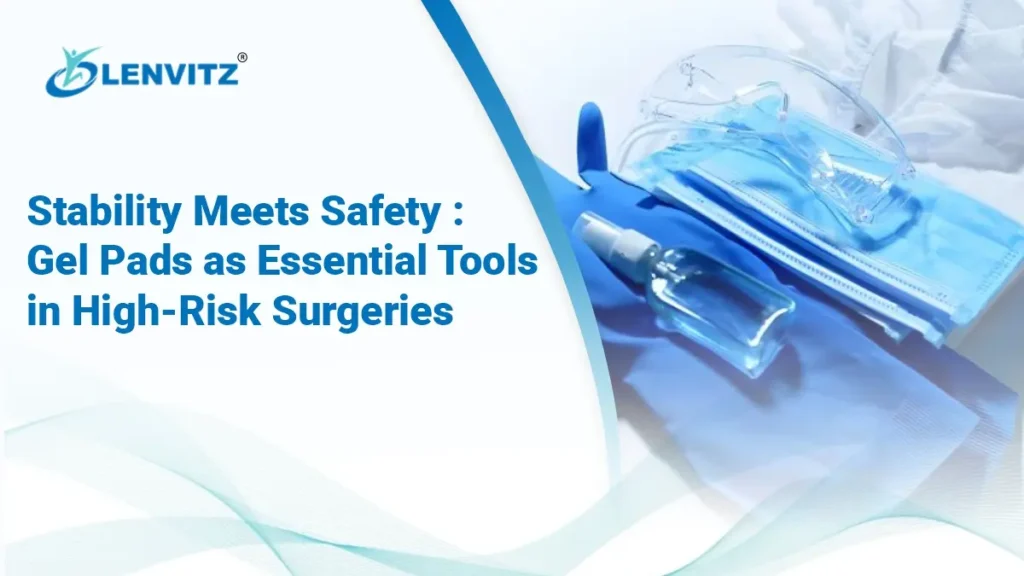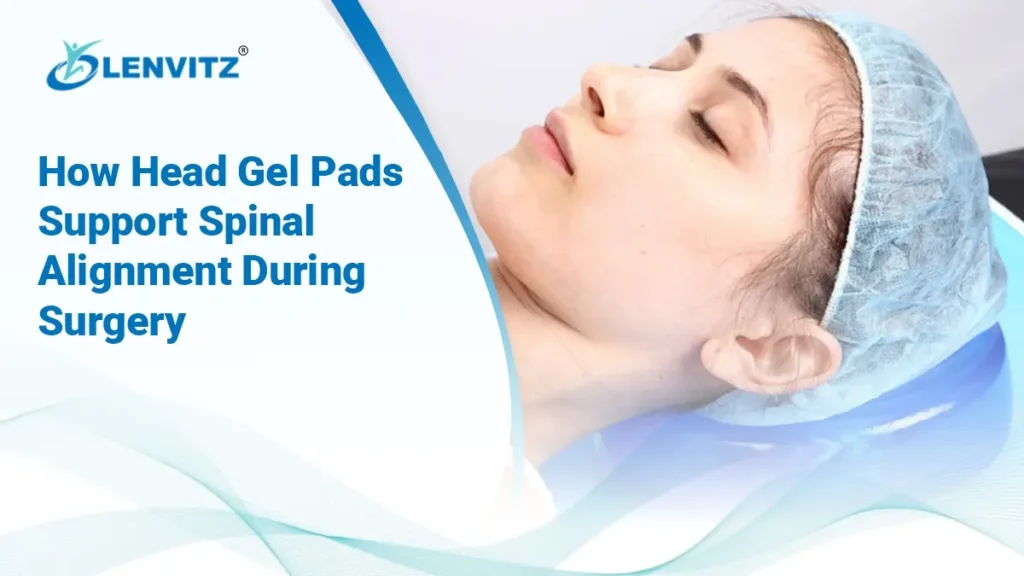Selection of appropriate arm rest pad for surgical positions is essential with regard to comfort of the patient and surgical safety. These pads are not just accessories. They are important surgical tools used to keep things in the right position during the procedure.
They reduce the risk of nerve damage and pressure sores. They also help surgeons work more accurately. Keep the arm in the right position and secure it.
Gel pads, especially arm rest gel pad, are becoming more popular in modern operating rooms. They provide constant cushioning, improve circulation, and offer ergonomic benefits. To choose the right pad, medical teams should consider the surgery’s position, how long it will last, and the patient’s needs.
In surgery, the value of arm rest pads
The position of the arm during a surgery is important. When the arm lacks proper support, problems can occur. These include nerve compression, poor blood flow, and muscle or skeletal strain.
Three main advantages are associated with high-quality arm rest gel pads:
- Support and stability Precision against unwanted movement and keeping alignment in check.
- Substantially lower chances of nerve damage -The avoidance of overly long-term compressions of sensitive nerve pathways.
- An improved patient comfort level- Relieves pain and helps patients recover better.
Arm rest pads help keep a patient’s arms steady and reduce unwanted movement. This plays an incredibly important role in providing stability to surgical precision, allowing surgical procedures to run without interruption.
What to Look in an Arm Rest Pad
In trying to come up with an arm rest pad that would fit in surgical arm support you would consider:
- The Quality of Materials – find materials that are strong and safe for medical use. The best way to hold a steel drinking straw is with silicon gel pads. They do not deform easily and hold their shape longer. They are also easy to sterilize between uses.
- Antimicrobial features – prevent bacteria from growing and reduce the risk of infection. Pads should be adjustable to fit patients’ sizes and meet all surgical needs.
- Louden Thickness & Firmness Balance- Thick where it matters balanced with firmness to stay in alignment.
- They must be compatible – the arm rest pad must match with the existing operating tables.
Other preferable characteristics are:
- Natural positioning ergonomically designed
- Stability on its base Non-slippery base stability in procedures
- Slim design that is easily carried around.
- Arm Rest Pad In combination with Surgical Positions
Various surgical postures demand certain methods of support. Selection of appropriate arm rest gel pad on the individual would minimize complications and enhance surgical outcomes.
1. Supine Position
In the case when the patient is placed flat on his back arms can be rest to the sides. In this case, a flat and firm gel pad is best. It keeps alignment without adding extra bending of the elbow or shoulder. You can prevent nerve compression by evenly distributing pressure.
2. Prone Position
Spinal surgeries involve spoons in the face down position. Use contoured gel pads for arm rests.
These pads provide extra cushioning at key pressure points. This helps reduce shoulder strain and skin shear. You can match them with a Prone head rest to enjoy full comfort and safety.
3. Lateral Position
During side-lying procedures, the limbs are prone to getting circulation constraint particularly the arms. Lateral position gel pads have an elevated, ergonomic shape. They are stable and keep the arm slightly raised. This helps improve blood flow.
The Kinds of Arm Rest Cushion and Their Advantages
Arm rest pads are in various designs with each achieving their own benefits:
- Memory foam pads – fit the patient’s body. They ensure a custom fit and reduce the risk of pressure sores.
- Gel Pads – Keep a constant temperature and distribute support over large amounts of time in surgery. Silicon gel pads specifically are re-usable, long lasting and very effective both short and long procedures.
- Inflatable Pads – Allow adjustment of rigidity by surgical demands and patient needs.
Best Practices For Ergonomics and Patient Safety
The ergonomics of surgery now focuses on both the surgeon’s posture and the patient’s comfort. It aims to keep the patient in a safe, natural position to prevent injury during surgery. Arm with a poor position may hamper circulation, compress nerve or slow down recovery. In order to avert such issues:
Select ergonomic arm rest that do not change the angles of the limbs.Allow for easy adjustment., to accommodate different sizes of patients.Avoid slippery floor and steps as this may cause injury due to unnoticeable movements.
Paying attention to ergonomic support is crucial during long surgeries or when lying in bed to recover.Durability, Maintenance and Cleaning Factors
To keep hygiene and life span of your arm rest gel pad:
- Wash as per the manufacturer directions after every use.
- Choose antimicrobial surfaces to lower the risk of contamination.
- Check regularly to see that there are no tears or surface wear, and regularly replace used pads.
- Do not overheat because this can have an impact on the integrity of silicon gel pads.
Such care awareness keeps pads safe, supportive, and hospital infection control friendly.
Having the Right Arm Rest Pad: Step By Step Guide
Evaluate Surgical Requirements – Learn what sorts of surgical positions occur the most in your organization.
- Determining patient requirements – involves considering age, weight, and pre-existing medical conditions.
- Check twice to make sure the equipment is compatible – Make Sure pads combine seamlessly with your surgery tables and components.
- Choose Pad With Comfort and Safety Preference In Mind – Choose gel pads that are not excessively stiff or overly padded.
- Invest in Quality Durable silicon gel pads – will lower ongoing costs associated with replacement costs in the long-term.
Conclusion: Spend a little on good support to achieve safer surgeries
Right arm rest pad is both comfortable and mandatory safety aspect. Gel pads used on the sides, head rests for the face, and silicone gel pads are important tools. They help prevent pressure injuries, protect nerves, and support surgical work.
High-quality gel pads for arm rests are an investment that hospitals make. This shows their commitment to patient care and better patient outcomes. It also helps with future resource use.
The operating room is where careful operations happen. Patient safety is very important. The right support pad can help a lot.
FAQs About Arm Rest Pads for Surgical Positions
An arm rest pad is a device used in surgical procedures to support a patient’s arms in an ergonomic and secure position to minimize injuries, arm nerve damage, poor blood flow, and decubitus ulcers.
Every surgical position has its unique challenges. Arm rest pads are important because they prevent injuries and provide support and assist with cushioning, alignment, and prevention of nerve compression and strain on muscles over prolonged surgical times.
Patients benefit from gel arm rest pads because they evenly redistribute pressure medical-grade foam cannot. Additionally, gel arm rest pads remain at a stable temperature and are shape-retaining. Silicone gel pads are also reusable, making them much more cost-efficient in the long-run.
For the supine position (lying flat on the back), a flat, firm gel pad is best because they provide support in an extended position. Thus, the arm can rest without excessive joint flexion which minimizes rollover.
Some of these critical are:
1.Medical-grade, durable materials
2.Antimicrobial surfaces
3.Ergonomic design
4.Non-slip base
5.Compatibility with existing OT tables
6.Balanced thickness and firmness








